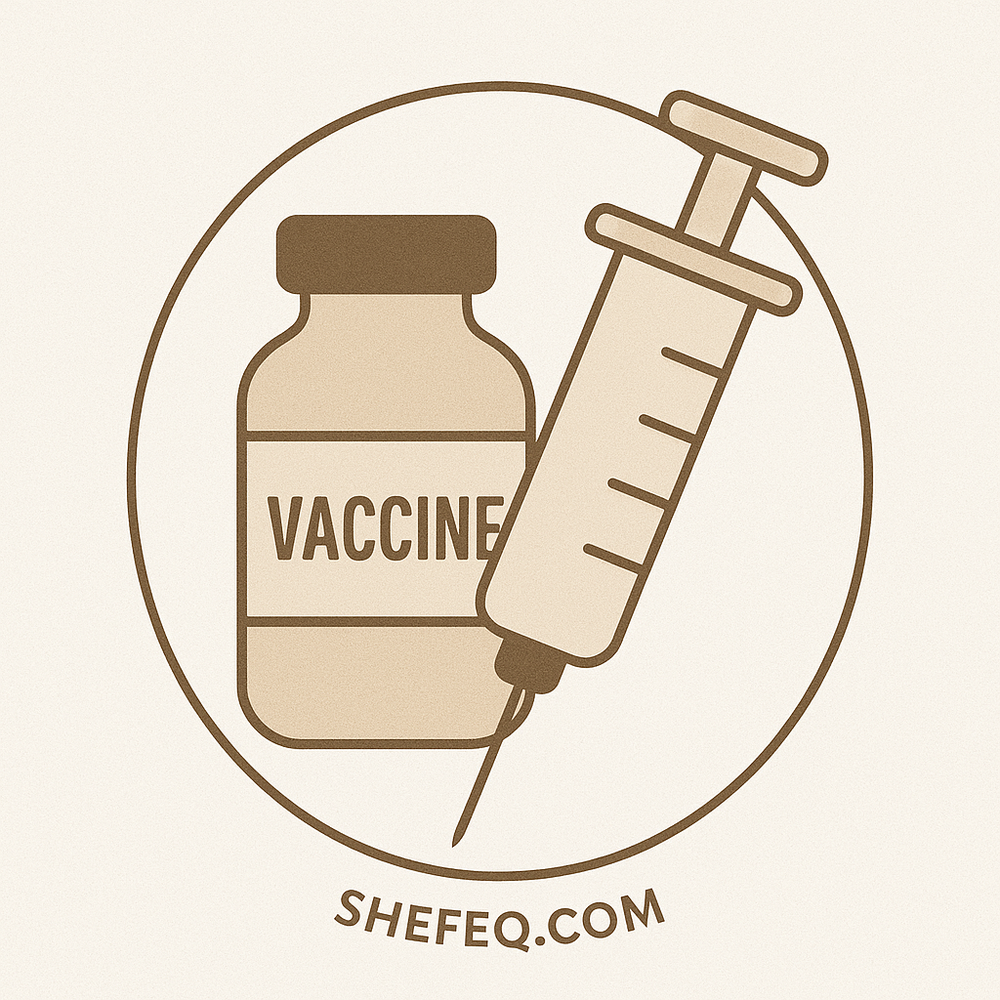Introduction
The 21st century is an era of technology, scientific progress, and revolutions in healthcare. One of these revolutions is the introduction of vaccines into our lives. Vaccination is one of the most effective tools to protect children from deadly and disabling infectious diseases.
However, some parents have concerns, fears, and sometimes doubts about this subject. Some deny the benefits of vaccines, while others are cautious about their potential risks.
This article explores the importance, necessity, safety, and myths vs. realities of vaccines administered during the preschool years.
1. What is a vaccine and how does it work?
A vaccine is a biological substance used to create immunity in the body against a specific disease. It introduces a weakened, inactivated, or partial version (antigen) of the disease-causing microorganism into the body, which helps the immune system recognize and prepare defense mechanisms against it.
1.1 Main purposes of vaccination:
-
Production of antibodies against the disease
-
Prompt immune response when encountering the infection later
-
Prevention of serious complications, hospitalizations, and deaths
2. List of preschool vaccinations and their purposes
In Azerbaijan and many other countries, the Ministry of Health has an approved National Immunization Schedule. According to this schedule, children receive the following vaccines in their preschool years:
| Age | Vaccine | Disease Prevented |
|---|---|---|
| At birth | BCG | Tuberculosis |
| At birth | Hepatitis B (1st dose) | Hepatitis B virus |
| 2 months | Penta (DTP-Hep B-Hib), OPV | Diphtheria, Tetanus, Whooping Cough, Hepatitis B, Hib, Polio |
| 3 months | Penta (2nd dose), OPV | Immune reinforcement |
| 4 months | Penta (3rd dose), OPV | Booster dose |
| 12 months | MMR (Measles, Mumps, Rubella) | Viral infections |
| 18 months | DTP (booster dose) | Reprotection |
3. Advantages of Vaccines
3.1 Prevention of diseases
Diseases such as measles, diphtheria, poliomyelitis, and hepatitis B have become rare.
Smallpox has been completely eradicated worldwide.
3.2 Herd immunity
With a vaccinated population, diseases don’t spread — even unvaccinated individuals are indirectly protected.
3.3 Economic benefit
Compared to treatment, vaccination is significantly cheaper and requires fewer resources.
3.4 Healthy development of children
Vaccines prevent serious complications and lifelong disabilities.
They help children integrate easily into education and social life.
4. Are Vaccines Dangerous?
4.1 Common myths and the truth behind them:
Myth 1: Vaccines cause autism
This myth originated from a fraudulent paper published in 1998. All major scientific studies have rejected this claim. The WHO, CDC, and other organizations have proven that there is no such link.
Myth 2: Vaccines weaken the immune system
On the contrary, vaccines train and strengthen the immune system.
Myth 3: Vaccines contain harmful substances
Substances like aluminum are present in extremely small amounts — well below harmful levels.
Myth 4: Natural infection is better
Natural infection can lead to paralysis, brain damage, or death. Vaccines eliminate these risks safely.
5. Side Effects and Their Severity
Most vaccines may cause mild side effects such as:
-
Pain and swelling at the injection site
-
Mild fever
-
Fatigue or irritability
Rarely:
-
Severe allergic reaction (anaphylaxis) — this is extremely rare and every medical facility is equipped to respond immediately.
Statistically, the chance of a serious vaccine reaction is less than 1 in a million, while the risk of death or disability from the diseases themselves is thousands of times higher.
6. Causes of Vaccine Hesitancy
6.1 Influence of social media
Misinformation spreads rapidly, while scientific explanations are often complex and hard to understand.
6.2 Religious and cultural misunderstandings
Some believe vaccines conflict with religious beliefs. However, the majority of Islamic scholars support vaccination as a protective obligation.
6.3 Personal experiences and fear
Parents who encounter side effects may reject all vaccines based on one incident.
7. Conditions and Precautions in Vaccination
-
Avoid vaccination during illness (fever, infection)
-
Follow the immunization schedule under medical supervision
-
Parents should be well-informed and educated about vaccination
8. Religious Views and Prophetic Advice
In Islam, preserving life is a fundamental principle. The Prophet Muhammad (PBUH) encouraged taking precautions against diseases.
Vaccination is considered a modern form of such precaution.
The Qur’an says:
"Do not throw yourselves into danger with your own hands..." (Surah Al-Baqarah, 2:195)
9. The Future of Vaccination and Technological Innovations
-
mRNA technology (e.g., COVID-19 vaccines)
-
Microneedle patches
-
Combined vaccines — delivering multiple protections at once
Conclusion
Preschool vaccinations are one of the foundational pillars of protecting children’s health.
Their purpose is to shield our children from future dangers, lifelong disability, and fatal diseases.
Decisions must be based not on fear or myths, but on scientific evidence.
Being a parent is not only about love, but also about responsibility.
By vaccinating, we gift our children an invisible shield that will protect them throughout their lives.
Question and Opinion
Question:
What differences in health and society might be observed between an unvaccinated community and a fully vaccinated one?
Opinion:
What doubts have you or other parents around you faced regarding vaccination?
What influenced your decision the most — fear, knowledge, or someone else's experience?
shefeq.com – A place for different perspectives.

